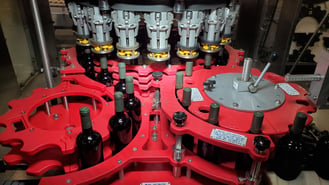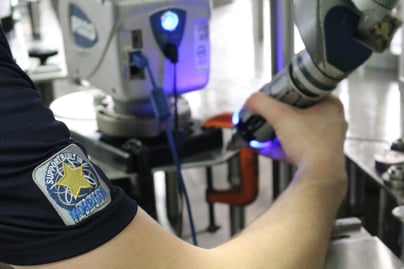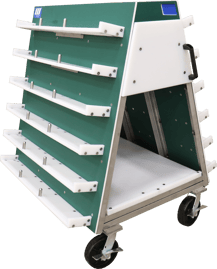Change parts, or stars and guides, are an essential part to many production lines for packaging products. They allow you to quickly switch between different containers so you’re able to run multiple sized containers on one manufacturing line.
It’s important to know the best practices for using and maintaining your change parts, so we’ve broken down six things you should keep in mind when it comes to change parts.
1. Don’t let change parts be an afterthought: O ften times, companies will design a machine or have an application they want to accomplish but don’t think about the change parts until the end of the planning process. Change parts require precise precision and are an essential part to many production lines, and they should be at the top of your list when planning a new line.
ften times, companies will design a machine or have an application they want to accomplish but don’t think about the change parts until the end of the planning process. Change parts require precise precision and are an essential part to many production lines, and they should be at the top of your list when planning a new line.2. Be accurate, through every step of the process: Whatever machine or line your change parts are running on, there’s a good chance lining your containers up accurately is necessary. Change parts are perfect for doing that, for applications like rinsing, filling, capping, and more. But they can only be accurate if they’re made accurately, so precise measurement before design of the part is key.

3. Label your change parts: This can mean a lot of things. The benefit of change parts is being able to switch them out to run different containers, but you need a way to know which set of parts belongs with which container. Figure out a way that works best for your line. This may be color coding the change parts: making them entirely different colors for different containers or adding color plugs as identification. Name tags that say which size container that part can run are also an option.

4. Proper storage can make things last longer or easier to locate: Most production line parts come at a high capital cost, so you want them to last you as long as possible. This means storing them well when you’re not using them so they’re in good shape when you go to put them on your line again. One option for storing change parts is parts carts, carts individually designed to store the change parts you have in a compact yet organized way. This ensures all your parts have a spot they belong when they’re not in use.
5. Know what your options are: There’s different kinds of change parts, and they’re different from manufacturer to manufacturer. You can buy change parts that fit your current machine as is, OEM style change parts. Another option is called quick-change core parts. The upside of this style of change part is they allow for tool-less changeover: an operator can easily switch out one set of change parts for another in minutes, increasing your uptime.
6. Take advantage of retrofitting: Don’t make more work for yourself than you have too, and that goes for the install process as well as the actual running of the change parts. Look into companies that can retrofit their parts to your existing equipment, saving you capital and allowing for quicker, lighter, and easier to switch change parts to be used on your production line.

4. Proper storage can make things last longer or easier to locate: Most production line parts come at a high capital cost, so you want them to last you as long as possible. This means storing them well when you’re not using them so they’re in good shape when you go to put them on your line again. One option for storing change parts is parts carts, carts individually designed to store the change parts you have in a compact yet organized way. This ensures all your parts have a spot they belong when they’re not in use.
5. Know what your options are: There’s different kinds of change parts, and they’re different from manufacturer to manufacturer. You can buy change parts that fit your current machine as is, OEM style change parts. Another option is called quick-change core parts. The upside of this style of change part is they allow for tool-less changeover: an operator can easily switch out one set of change parts for another in minutes, increasing your uptime.
6. Take advantage of retrofitting: Don’t make more work for yourself than you have too, and that goes for the install process as well as the actual running of the change parts. Look into companies that can retrofit their parts to your existing equipment, saving you capital and allowing for quicker, lighter, and easier to switch change parts to be used on your production line.


